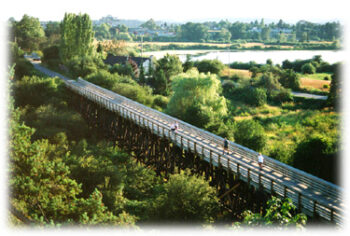Alberta Aviation Museum

The Alberta Aviation Museum New look, new stories, new adventure! With the recent closure of Edmonton’s City Centre Airport, you might have wondered if the airfield’s historic aviation museum would …Read More
Models\Post Object
(
[_post] => WP_Post Object
(
[ID] => 5762
[post_author] => 3
[post_date] => 2017-05-26 15:02:23
[post_date_gmt] => 2017-05-26 15:02:23
[post_content] =>  Did You Know?
During the Second World War, Blatchford was the busiest airfield in the world. Over 800 allied planes would fly through on a daily basis, using Edmonton as a final stop before heading off to their wartime destinations.
Alberta Aviation Museum
11410 Kingsway NW
Edmonton, Alberta. T5G 0X4
Phone 780-451-1175
___
Did You Know?
During the Second World War, Blatchford was the busiest airfield in the world. Over 800 allied planes would fly through on a daily basis, using Edmonton as a final stop before heading off to their wartime destinations.
Alberta Aviation Museum
11410 Kingsway NW
Edmonton, Alberta. T5G 0X4
Phone 780-451-1175
___
The Alberta Aviation Museum
New look, new stories, new adventure!
With the recent closure of Edmonton’s City Centre Airport, you might have wondered if the airfield’s historic aviation museum would be shutting down, too. Well, wonder no more. Not only is the museum staying open, the staff and volunteers have been hard at work (for over a year) reinventing the hangar to attract a new generation of museum-goers. The results are nothing short of impressive. In fact, if a visit wasn’t on your summer to-do list, squeeze it in. You’ll discover new exhibits, new stories and maybe even a passion for all things aviation. A New Vision If you remember visiting the Aviation Museum when you were younger, you’ll notice some big changes when you walk in the front doors. In the past, the hangar of the museum housed dozens of aircraft, each paired with a plaque. Today, the planes are still there, but instead of dusty plaques, they are now surrounded by life-sized dioramas, each telling an engaging and interactive story.“We’re really trying to focus on the storytelling element,” says Zena Conlin, the museum’s marketing manager. “Instead of just plopping down an aircraft with a description next to it, we’re trying to put it into context through the visual design of the exhibit. One look, and you’ll be able to understand the plane’s role and imagine it in action.”In the past, all the museum needed to do to attract crowds was land an interesting plane on the adjacent runway and invite aviation enthusiasts to come look at it. With the new residential zoning, however, this is no longer a possibility. Problematic? A bit, but Conlin says that this loss has actually breathed new life into the museum. “Initially, we thought that the rezoning would have a negative effect on the museum. But as time went on, we found that this really wasn’t the case. It’s given us the motivation to really dig into the history and present it in new and interesting ways.” Fortunately for us, that means hearing stories that have never been told. An Evolving Story Planes and mechanical histories aren’t the only exhibits you’ll discover are part of the museum’s new design. A focus has also been placed on the exploration of forgotten or ignored histories from Blatchford Airfield's past.
“A lot of the smaller stories of the airfield have been overlooked for a very long time, and we’re trying to bring them to light,” explains Conlin. “There were quite a few female pilots in the early days of aviation that haven’t really been glorified in the same way as their male counterparts. The same can be said of women who worked in the hangars or in radio control.”As you’ll discover on your visit, the museum’s researchers have uncovered dozens of these forgotten histories, through a mix of archival research and studying the donated documents they’ve received from the community. “The more stories we can tell, and the bigger variety we can offer, the better we’ll be able to engage the public with our exhibits and events.” Even if planes don’t catch your interest, you’re bound to find a human story in Blatchford’s past that you can relate to. Living History As impressive as the exhibits are, they take up only half of the double-wide hangar that acts as the museum's home. On the other side, you’ll find the museum’s workshop space, where retired pilots, mechanics and hobbyists volunteer their time to restore old aircraft and talk to the public about their work. The museum’s oldest exhibit is the humble plough that first broke the ground when the Blatchford Airfield was first being constructed. While this artifact is integral to the story of aviation in Edmonton, it is still firmly rooted in the past and can be difficult for the average visitor to relate to. In the restoration space, you can see history come alive in the words and the demonstrations of the museum’s volunteers.
“We wouldn’t be able to do any of this without our volunteer team,” Conlin says. “As aviation technology changes, the knowledge and skills that older generations carry is in danger of being lost.” With the restoration space, this expertise and the living connection to history can be put on display for all museum-goers to see.
 Did You Know?
During the Second World War, Blatchford was the busiest airfield in the world. Over 800 allied planes would fly through on a daily basis, using Edmonton as a final stop before heading off to their wartime destinations.
Alberta Aviation Museum
11410 Kingsway NW
Edmonton, Alberta. T5G 0X4
Phone 780-451-1175
___
Did You Know?
During the Second World War, Blatchford was the busiest airfield in the world. Over 800 allied planes would fly through on a daily basis, using Edmonton as a final stop before heading off to their wartime destinations.
Alberta Aviation Museum
11410 Kingsway NW
Edmonton, Alberta. T5G 0X4
Phone 780-451-1175
___





 [post_title] => Summer Health
[post_excerpt] =>
[post_status] => publish
[comment_status] => open
[ping_status] => closed
[post_password] =>
[post_name] => summer-health
[to_ping] =>
[pinged] =>
[post_modified] => 2021-05-26 20:09:20
[post_modified_gmt] => 2021-05-27 02:09:20
[post_content_filtered] =>
[post_parent] => 0
[guid] => http://www.summercity.ca/?p=5792
[menu_order] => 0
[post_type] => post
[post_mime_type] =>
[comment_count] => 0
[filter] => raw
)
[_excerpt] => Withstanding Summer’s Heat. Tips for sun-smart health Summer in the city: a season for wandering through street festivals, enjoying outdoor activities, relaxing in the sun and—ideally—not getting a sunburn along …
)
1
[post_title] => Summer Health
[post_excerpt] =>
[post_status] => publish
[comment_status] => open
[ping_status] => closed
[post_password] =>
[post_name] => summer-health
[to_ping] =>
[pinged] =>
[post_modified] => 2021-05-26 20:09:20
[post_modified_gmt] => 2021-05-27 02:09:20
[post_content_filtered] =>
[post_parent] => 0
[guid] => http://www.summercity.ca/?p=5792
[menu_order] => 0
[post_type] => post
[post_mime_type] =>
[comment_count] => 0
[filter] => raw
)
[_excerpt] => Withstanding Summer’s Heat. Tips for sun-smart health Summer in the city: a season for wandering through street festivals, enjoying outdoor activities, relaxing in the sun and—ideally—not getting a sunburn along …
)
1





 Galloping Goose Trestle Bridge[/caption]
____
Galloping Goose Trestle Bridge[/caption]
____
 Fort Rodd Hill and Fisgard Lighthouse National Historic Sites[/caption]
____
Fort Rodd Hill and Fisgard Lighthouse National Historic Sites[/caption]
____
 _____
_____
 Butchart Gardens[/caption]
You might be surprised to learn Victoria is also a foodie paradise. Locally sourced, organically grown food is a priority in -Canada’s fittest capital. You’ve gotta eat, right?
___
Butchart Gardens[/caption]
You might be surprised to learn Victoria is also a foodie paradise. Locally sourced, organically grown food is a priority in -Canada’s fittest capital. You’ve gotta eat, right?
___
 Salt Spring Island[/caption]
Take a float plane from Victoria’s Inner Harbour or a ferry from Swartz Bay, and you’ll arrive at Salt Spring Island, BC’s brilliant cultural destination. With a population of just over 10,000, Salt Spring boasts more artists and performers per capita than anywhere else in the province. Janet Clouston of the Salt Spring Island Chamber of Commerce says, “The arts and culture scene here is better than in some medium-sized cities. To be able to have what we have here and a small-town life experience is amazing!”
But Salt Spring Island is more than arts and culture. It also supports surprisingly diverse dining. From funky eateries like the Tree House Cafe to the grandeur of Hastings House (one of the West Coast’s most-praised restaurants), there’s something for every palate, much of it locally grown. Salt Spring Island has more than 200 active farms, including three vineyards. You can shop the farmers’ market in Ganges every Tuesday afternoon from June through October.
Want just a taste? Visit on a Saturday. From April until late October, you’ll find the gigantic Salt Spring Market in Centennial Park in Ganges. Nearly 150 artisans take part in the market annually, and everything is made or grown on the island—part of Salt Spring’s authentic charm.
______
Salt Spring Island[/caption]
Take a float plane from Victoria’s Inner Harbour or a ferry from Swartz Bay, and you’ll arrive at Salt Spring Island, BC’s brilliant cultural destination. With a population of just over 10,000, Salt Spring boasts more artists and performers per capita than anywhere else in the province. Janet Clouston of the Salt Spring Island Chamber of Commerce says, “The arts and culture scene here is better than in some medium-sized cities. To be able to have what we have here and a small-town life experience is amazing!”
But Salt Spring Island is more than arts and culture. It also supports surprisingly diverse dining. From funky eateries like the Tree House Cafe to the grandeur of Hastings House (one of the West Coast’s most-praised restaurants), there’s something for every palate, much of it locally grown. Salt Spring Island has more than 200 active farms, including three vineyards. You can shop the farmers’ market in Ganges every Tuesday afternoon from June through October.
Want just a taste? Visit on a Saturday. From April until late October, you’ll find the gigantic Salt Spring Market in Centennial Park in Ganges. Nearly 150 artisans take part in the market annually, and everything is made or grown on the island—part of Salt Spring’s authentic charm.
______